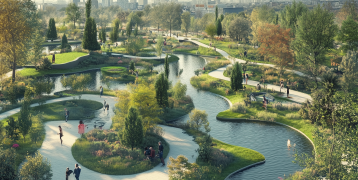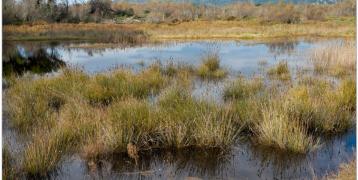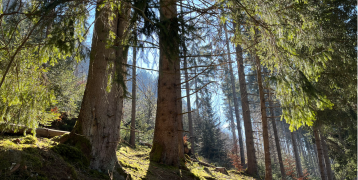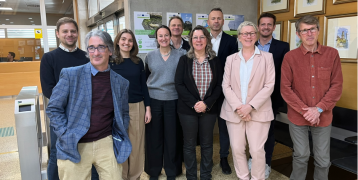Sustainable Urban Drainage Systems and water harvesting
Objective and context of the matchmaking
The matchmaking was requested by the Municipality of Torino, which has been struggling with increasing temperature, urban island effect and weather anomalies, as well as unpredictable rain patterns. Recently, Torino experienced 22 months without rain, which had severe implications for the local vegetation. Due to increasing weather extremes, the Municipality has been experiencing a water crisis, which exacerbated conflicts about the priority use of water resources.
To this end, Torino is interested in the topic of water harvesting. The Municipality has adopted a Resilience Plan of Torino, a guidance document that is not yet mandatory. Over the last few years, it has started working on resilience projects and implemented new approaches such as natural shading, aquaponic food production systems, transformation of parking lots by removing asphalt, instalment of permeable surfaces and rain gardens, or painting of black asphalt with special reflective paint to reduce surface temperature. While the topic is still quite new, there is an urgency to implement new measures that will allow better drainage and water retention in the city.
Policy challenges
With the matchmaking ‘SUDS and water harvesting’ the municipality was interested to hear from policymakers, designers and technicians from other regions to learn new ways of designing sustainable solutions and to hear their ideas on a specific case. To try and find answers to these questions, the following peers participated to share their knowledge and insights:
-
Bas van de Pas, Expert Water Safety and Flooding, Province Noord-Holland, The Netherlands
-
Michal Kravčík, Kosice Self-governing Region, Slovakia
Key insights shared during the matchmaking
During the matchmaking, several key recommendations and insights were shared. Discover them below.
- Adopt local laws to improve urban rainwater management.
- Require green roofs, infiltration systems, and rain gardens to reduce sewer pressure and flooding.
- Develop water storage and retention guidelines for new developments.
- Mandate climate adaptation measures like green roofs and water retention for new buildings.
- Hold landowners accountable for on-site water infiltration and retention.
- Demonstrate long-term financial benefits of adaptation investments to attract investors.
- Educate the public on innovative water solutions like greywater reuse.
- Promote understanding of the water cycle and reposition rainwater as a resource, not a waste.
- When communicating, highlight cost savings and benefits of sustainable water management.
- Establish joint collaboration through a covenant (multi-stakeholder commitment towards a specific goal such as sustainable buildings).
- Ensure long-term maintenance of water management infrastructure.
- Collaborate with key stakeholders, including water and insurance companies, and urban planners.
- Enhance evaporation through vegetation to support small water cycles.
- Redirect street-level water to parks using swales and permeable surfaces.
- Lower green lanes along roads to improve water infiltration while preserving trees.
- Expand green infrastructure, including rain gardens, green roofs, and retention spaces.
- Implement rainwater capture solutions like gravel boxes, ponds, and infiltration crates.
- Mandate green roofs for all new flat-roof buildings.
- Promote household rainwater harvesting with reuse options.
- Design large-scale rainwater collection systems, like underground tanks for irrigation.
- Partner with insurance companies to highlight cost savings from better water management.
- Address rising asthma rates by increasing humidity through vegetation.
- Improve air quality by boosting water vapour levels.
- Emphasise health benefits of humidity retention in reducing pollution-related illnesses.
- Prevent overheating: A 1,000 km² city can generate over 5 TWh of excess heat daily. 100 such cities produce as much energy into the atmosphere per day as humanity consumes in one day.
- Rainwater evaporates and forms vapour, which then creates new rainfall. To maintain this natural cycle, rainwater should be retained in urban areas rather than being drained away.
- Redirecting rainwater into the ground instead of channelling it to the sea can help lower summer temperatures in cities by more than 5°C.
- Increasing vegetation boosts humidity and evapotranspiration, which naturally cools the surrounding air.
- Excessive drainage and paved surfaces in cities trap heat and worsen the urban heat island effect by preventing water infiltration.
- Increase greenery to enhance humidity, evapotranspiration, and natural cooling.
Additional resources
Discover additional resources we have on the topic to get more information.






